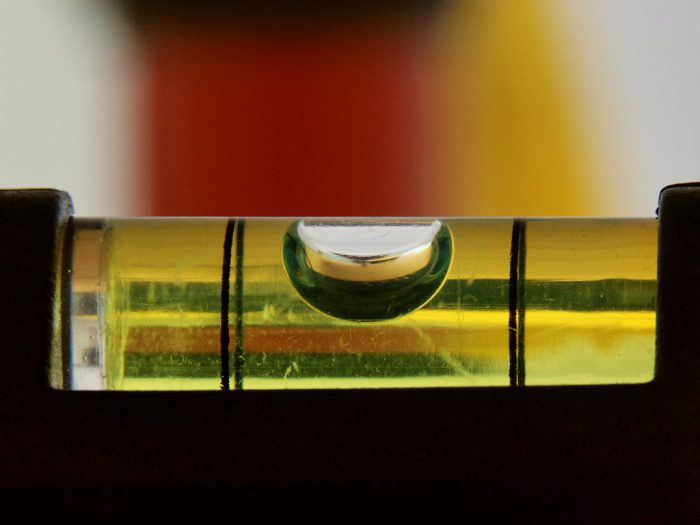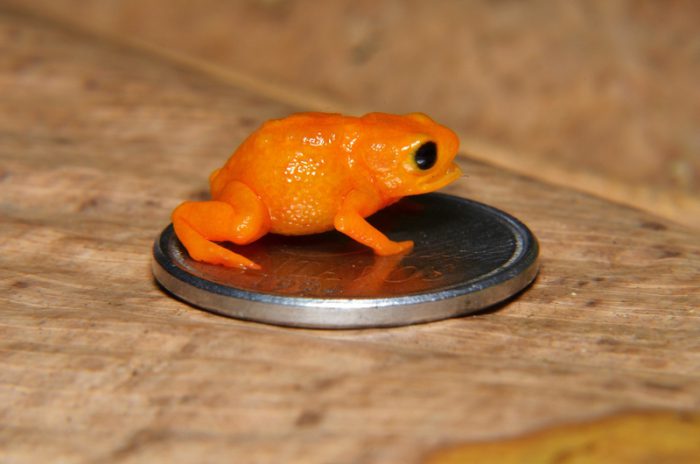If you asked someone to name the first action that comes to mind when they hear the word 'frog', you'd probably have a lot of them say: hopping!
Frogs hop. It's their thing, and they're really good at it.
Take the pumpkin toadlet of the rainforest in southeastern Brazil. This super tiny orange buddy lives hidden amongst the leaf litter on the forest floor. It's pretty tough to spot, but if a predator does find it, it's BOING! Straight up into the air. Yes, this frog can certainly leap.
It's the landing that is the problem.
No sooner does this M&M-sized amphibian burst skyward than it begins to twist and tumble. Suddenly, it's completely upside-down in midair and—oh no!—FLOP! It's landed flat on its back. Poor little guy!
So what is the cause of the frog who could not land his hop? (At least, not successfully.)
Inner ear worries
Of course, scientists really wanted to know the answer to this question. So a group of them began a study on the reasons behind this odd imbalance.
The pumpkin toadlet belongs to a genus (group) of frogs known as Brachycephalus. These frogs are all super tiny and are all equally as terrible at landing their jumps. They studied their bodies as compared to other frogs (147 different species, in fact!). They even did CT scans—these are specialized X-rays of their heads—to better understand the insides of these frogs. And what they found appears to answer the big question behind these small critters.
They have very small inner ears. In particular, the semicircular canals of these frogs are the smallest ever recorded in an adult vertebrate (backboned animal). Neat, right? But ... how does this tie into jumping and not landing?
All about balance

The fluid in our inner ear acts a lot like the fluid in this level, a tool used in construction to make sure things are perfectly balanced. (Wikimedia Commons)
Many animals have an inner ear, humans including. Certainly hearing is a huge part of what this part of the body does. But so is balance.
This part of the body is vital in telling us which way is up. Within the canals is fluid. Depending on how it is flowing, we get a sense of whether we are up or down, left or right, and so forth. You could almost think of it like the bubble in the middle of a level used in construction.
However, in the Brachycephalus frogs, the canals are so small and thin, the liquid has a very difficult time flowing freely. So when the frog leaps up, the frog immediately becomes disoriented. It has so little idea about where it is, that it stays in a launch posture even as it is hitting the ground! (Most frogs tuck their legs back in to prepare to land.)
Add on to this some pretty short legs and you've got a frog that is not exactly a graceful mover. Thankfully, these brightly coloured frogs are poisonous. Maybe that will keep away the predators that they can't outrun (hop?).
For a look into their particular world, enjoy this collection of Brachycephalus frogs, all taking flight ... and crashing spectacualrly.
NOTE: OWLconnected is taking the next few days off to recognize Canada Day, which is tomorrow, July 1. We will see you again soon with more posts, starting Monday, July 4!
 This super tiny fella is not winning any gymnastics competitions! (ID 48229164 © Maffeifabio | Dreamstime.com)
This super tiny fella is not winning any gymnastics competitions! (ID 48229164 © Maffeifabio | Dreamstime.com)









